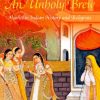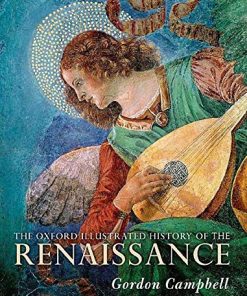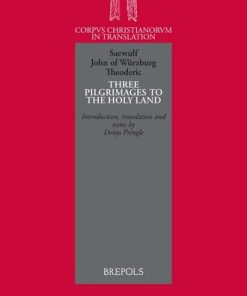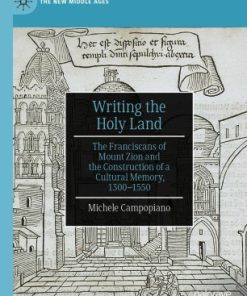The Oxford History of the Holy Land 1st Edition by Robert Hoyland, Williamson 0191036477 9780191036477
$50.00 Original price was: $50.00.$25.00Current price is: $25.00.
The Oxford History of the Holy Land 1st Edition by Robert G. Hoyland, H G M Williamson – Ebook PDF Instant Download/DeliveryISBN: 0191036477, 9780191036477
Full download The Oxford History of the Holy Land 1st Edition after payment.

Product details:
ISBN-10 : 0191036477
ISBN-13 : 9780191036477
Author : Robert G. Hoyland, H G M Williamson
The Oxford Illustrated History of the Holy Land covers the 3,000 years which saw the rise of Judaism, Christianity, and Islam—and relates the familiar stories of the sacred texts with the fruits of modern scholarship. Beginning with the origins of the people who became the Israel of the Bible, it follows the course of the ensuing millennia down to the time when the Ottoman Empire succumbed to British and French rule at the end of the First World War. Parts of the story, especially as known from the Bible, will be widely familiar. Less familiar are the ways in which modern research, both from archaeology and from other ancient sources, sometimes modify this story historically. Better understanding, however, enables us to appreciate crucial chapters in the story of the Holy Land, such as how and why Judaism developed in the way that it did from the earlier sovereign states of Israel and Judah and the historical circumstances in which Christianity emerged from its Jewish cradle. Later parts of the story are vital not only for the history of Islam and its relationships with the two older religions, but also for the development of pilgrimage and religious tourism, as well as the notions of sacred space and of holy books with which we are still familiar today. From the time of Napoleon on, European powers came increasingly to develop both cultural and political interest in the region, culminating in the British and French conquests which carved out the modern states of the Middle East. Sensitive to the concerns of those for whom the sacred books of Judaism, Christianity, and Islam are of paramount religious authority, the authors all try sympathetically to show how historical information from other sources, as well as scholarly study of the texts themselves, enriches our understanding of the history of the region and its prominent position in the world’s cultural and intellectual history.
The Oxford History of the Holy Land 1st Table of contents:
1. The Birth of Israel
The beginning of Israel: the biblical narrative
Problems with the narrative
Chronological framework
Archaeological background
The Israelite settlement: the growing debate
The Israelite settlement: assessing the evidence
Israel’s emergence
The Shasu and an all Israelite identity in the late 13th and early 12th centuries bce
The (re)emergence of local identities in the late 12th century bce
Stressing ‘Israel’ again: the 11th and early 10th centuries bce
Israel’s development
The Exodus group and the Exodus story
The history of Israel
By way of conclusion
2. Iron Age: Tribes to Monarchy
Writing the history of ancient Israel
Origins of Israel
Samuel
The Philistines
Saul
David
Relationship of Saul and David2. The Holy Land in the period of the Israelite monarchies
Solomon
Conclusions
3. Israel and Judah, (c.931–587 bce)
War between Israel and Judah (c.931–881 bce)
The dynasty of Omri/Ahab (c.881–841)
The dynasty of Jehu (c.841–749)
The last kings of Israel (c.750–722)
The kingdom of Judah alone (c.722–587)
4. Babylonian Exile and Restoration, (587–325 bce)
Judah under Babylonian rule
The Babylonian exile
The start of Persian rule
Constitutional arrangements
Judah under the Persians
Temple building
Ezra
Nehemiah
The fourth century
Samaria and the Samaritans
Conclusions
5. The Hellenistic and Roman Era
The Hellenistic era
The Roman era
6. A Christian Holy Land, (284–638 ce)
7. The Coming of Islam
The conquest of Palestine
The rule of the Umayyad dynasty (661–750)
Later dynasties: Abbasid, Tulunid, Ikhshidid, and Fatimid rule (750–1099)
8. The Holy Land in the Crusader and Ayyubid Periods, (1099–1250)
A brief historical overview of the Holy Land, 1099–1291
The early establishment of the Crusader states in the Holy Land
The military Orders in the Holy Land
Frankish religious monuments and castles: a new visual landscape
Aspects of Frankish government and society
The Muslim response and recovery, 1099–1187
Frankish-Muslim coexistence from 1099 to 1187
After Saladin: the Ayyubids and the Holy Land: 1193–1250
Concluding remarks
9. The Holy Land from the Mamluk Sultanate to the Ottoman Empire, (1260–1799)
Defining the period
The Turks in the Islamic world and their impact on the Holy Land
The Mamluk institution and the formation of a Mamluk Sultanate
The Ottomans
A political history of the Holy Land: Mamluks (1260–1517)
A political history of the Holy Land: Ottomans (1517–1799)
Administration patterns and the status of the Holy Land
Population: demographic trends and interfaith relations
Locals, travellers, and pilgrims: narrating the Holy Land
10. From Napoleon to Allenby: The Holy Land and the Wider Middle East
11. Pilgrimage
The biblical background
Christian pilgrimage
Rediscovering the Holy Land: the centuries of calm (1291 to 1800)
The nineteenth century: a new development
‘ Traditional pilgrims’
Protestant ‘pilgrims’
Muslim and Jewish pilgrimage
12. Sacred Spaces and Holy Places
Pre-Bronze Age (c.10,000–3300 bce)
Bronze Age (c.3300–c.1200 bce)
Iron Age I (c.1200–c.1000 bce)
Iron Age II (c.1000–c.586 bce)
The Babylonian, Persian, Hellenistic, and early Roman periods (586 bce–70 ce)
The late Roman and Byzantine period (70–636/7 ce)
The early Islamic period (636/7–1099 ce)
The Crusades and kingdom of Jerusalem (1099–1291 ce)
The Ayyubid and Mamluk periods (1187–1517 ce)
The Ottoman period (1516–1917 ce)
13. Scripture and the Holy Land
Introduction
Jewish Scripture
Christian Scripture
Muslim Scripture
Conclusions
Further Reading
Index
People also search for The Oxford History of the Holy Land 1st:
the holy land an oxford archaeological guide
the oxford history of anglicanism
the oxford history of english
the oxford history of christianity
what is the history of the holy land
Tags: The Oxford History, Holy Land, Robert Hoyland, Williamson
You may also like…
Arts - History & Criticism
The Oxford Illustrated History of the Renaissance 1st Edition Gordon Campbell
History - European History
History - World History
The Oxford Illustrated History of the Holy Land H.G.M. Williamson Et Al.
History - Latin American History
The Oxford Handbook of Central American History Robert Holden
History - World History
The Oxford History of the World 1st Edition by Felipe FernándezArmesto 0192884039 9780192884039











